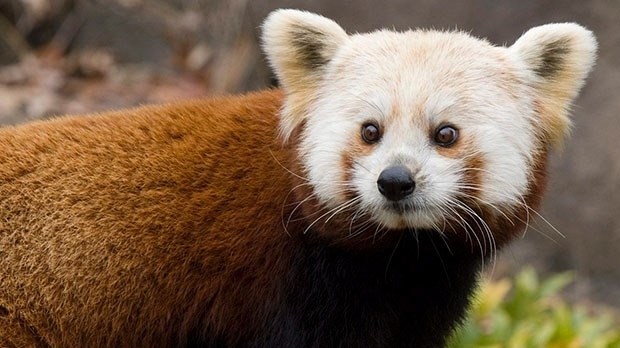
Shama, a female red panda, is seen in an undated file photo provided by the Smithsonian's National Zoo. The death of a red panda at a British Columbia zoo with a history of animal fatalities has activists calling for the facility to be shut down.
Image Credit: Smithsonian's National Zoo via AP
August 30, 2015 - 6:30 PM
VANCOUVER - The death of a red panda at a British Columbia zoo with a history of animal fatalities has activists calling for the facility to be shut down.
A male red panda named Rakesh died of a fungal infection at the Greater Vancouver Zoo on Aug. 17, two months after being transferred from Winnipeg as part of a program to preserve endangered species.
Rakesh, who was about 15 months old, was likely infected before leaving the Assiniboine Park Zoo, said Jody Henderson, the zoo's general manager.
She said veterinarians in Manitoba had not diagnosed Rakesh with the illness because he wasn't showing any symptoms and there was no information in his medical cards.
"This infection can lie dormant for up to six years in an animal," Henderson said. "So it's not something that's easily detectable."
Critics have cited the deaths of several animals at the Greater Vancouver Zoo in recent years as a reason for closing the Aldergrove, B.C., facility.
Four zebras died in 2009, followed by two giraffes in 2011, and a Siberian tiger died suddenly last year.
"We can see very clearly that stuff dies there prematurely, constantly," said David Isbister, an organizer with the group Liberate GVZoo Animals.
Isbister said he's been keeping track of deaths at the zoo for years and wants to see it shuttered.
Dozens of people from the group were planning to protest at the zoo on Sunday, using Rakesh's death as an "unfortunate but necessary rallying point," Isbister said.
"We're exasperated, we're frustrated. We'd like to see them shut down entirely, honestly," he said. "That seems to be the only way that we can get any justice for all the deaths and many other problems that have happened there."
Vancouver Humane Society spokesman Peter Fricker said the zoo has made improvements in recent years, but his organization is still against keeping animals in captivity unless there's a strong conservation reason.
"What we're seeing currently is that zoos are doing relatively little conservation work. And as far as we're concerned, they're still primarily about putting animals on display for profit."
Rakesh came to British Columbia as part of the international Species Survival Program, managed by the Association of Zoos and Aquariums, based in Silver Spring, Md.
The association did not respond to repeated requests for an interview.
According to its website, the program is used to manage animals, particularly those that are threatened or endangered. But animal welfare activists see it as a way for zoos to legitimize putting animals on display.
"In our view, the species survival plans are about keeping the zoos stocked up with animals for their captive populations," Fricker said. "It has almost nothing to do with protecting these animals in their natural habitats."
Henderson said she understands that while not everyone agrees with keeping animals in captivity, the Greater Vancouver Zoo is regulated by the non-profit group Canada's Accredited Zoos and Aquariums and the province.
Henderson said the zoo reports any animal deaths to the SPCA, which declined comment.
The animals' health and well-being is the zoo's top priority, she said.
"We're here because of our love of animals and how we can save these species in the wild."
News from © iNFOnews, 2015